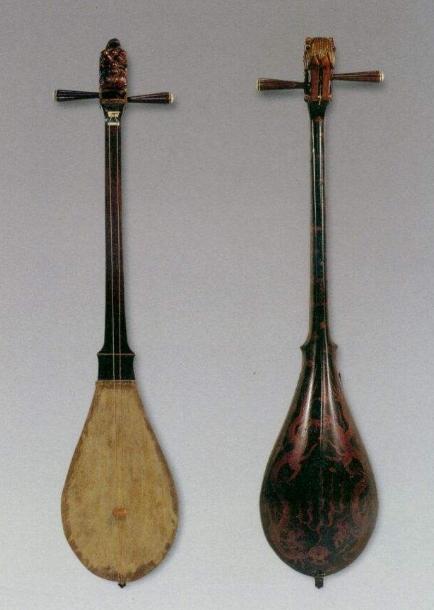The Origin and Development of Hulei
Hu Lei: Chinese ancient stringed instruments. Hu Lei was also known as "Huqin" and "Er Xian" in ancient times, and it was played immediately. Originally spread in the southwest region, it is called "Dragon Head Pipa", and it was extremely popular in the Tang Dynasty, and it is rarely recorded in later generations.

As early as the 4th century AD, in the frescoes of Ajanta in western India, there were already stick-shaped lutes and pear-shaped lutes. Since the Han and Wei Dynasties, musicians from the Western Regions have settled down through the "Silk Road" to perform their art in the central region, and have brought the Western Regions Quxiang Pipa through the Qiuci.
In 780 AD (the first year of Jianzhong), Tang Dezong Li Shi ascended the throne. When the prime minister of the dynasty (one said to be the Jiedu envoy of Zhenhai) Han Huang went to Sichuan as an envoy, Yu Luogu accidentally got a solid and precious odd wood, and asked a famous craftsman to make two. Qin, named Da and Xiao Hulei, was dedicated to Emperor Li Shi.
During the reign of Emperor Wenzong Li Ang (827-840), Xiao Hulei was still hidden in the inner palace. In AD 841, after Emperor Wuzong Li Yan ascended the throne, he complained that Emperor Wenzong was jealous of Shiliang, and all the musicians and those who were favored at home would be punished and demoted.
In the 30th year of Emperor Kangxi of the Qing Dynasty (1691), the famous poet Kong Shangren (1648-1718) got Xiao Hulei in Beijing, and engraved his poem on Xiao Hulei's pair of teeth.
Xiaohulei has been circulated from time to time. At the beginning of this century, a person named Liu Shiheng published the legend of "Little Hulei" and attracted people's attention. The collector who collected Xiaohulei gave him this precious qin. To this end, he specially built the "Little Hulei Pavilion", and invited the famous writer Lin Qinnan to wait in the pavilion to listen to the performance of senior musicians. Coincidentally, one of the musicians who listened to the pipa in "Xiao Hu Lei Ge" was named Zhang Ruishan. He said that he bought a two-string pipa thirty years ago, and it looked very old. Take a look, it is Da Hulei. Therefore, Zhang Ruishan gave up his love and gave Da Hulei to Liu Shiheng. Liu Shiheng renamed the "Little Hulei Pavilion" as "Shuanghulei Pavilion", and collected all the records and poems about the big and small Hulei, and edited it into a book "Shuanghulei Ability", which was published in Tianjin in 1911.
 渝公网安备 50010702504639号
渝公网安备 50010702504639号